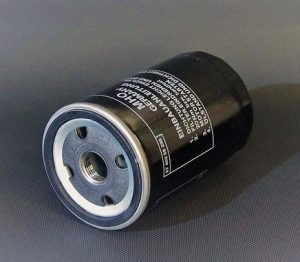Change Your Car Oil: How-To Guide

1. Do you need to change your car oil?
Before you begin, lets make sure you really need to change your car oil. The first thing to ensure is that your car is not hot. Wait for at least an hour before opening the bonnet of your car. To begin the procedure you will need to check the amount and quality of the oil currently in the vehicle. Around the engine you should see a bright colored ring (red or yellow is common). The “dip-stick” is used to measure the car’s oil level. Make sure to have paper towel, or cloth on hand as this can get messy. Gently turn and pull the dip-stick out of its hole, you will notice its quite long. Place the end of the stick on your paper tower to analyse the oil. There should be two holes, dots, or bumps on the surface, these are the minimum and maximum levels of oil. If you notice the oil as being dirty (thick and dark) or at a very low level, guess what! You need an oil change.
2. Jack the car up

Now you know you need to change your car oil. The next step is to “jack-up” the car to give yourself more room to perform it. You can do this two ways, either with a car hoist or a trolley jack. Most people do not own their own car hoist, so I will assume you use the jack. Park your car in a space where you have room to walk around it. Make sure that you have put your car into park with the hand brake on. As a pre-cautionary step, place some chucks (or blocks) behind the rear wheels to ensure the car can’t roll away. Now it is time to jack-up the car. Your car will have jacking points determined by the manufacturer. You can find these within your car manual. Once you have located the correct position, slid the trolley jack under your car from the front and begin to pump the handle. Once the car is at a good height to get underneath, lock the jack. You are now ready for the next step.
3. Drain the old oil
The car is now ready to have its engine oil drained. You will need to find the oil plug. You will generally find the oil plug at the lowest point of the engine. Make sure it is the engine oil plug and not the plug for the transmission. If you are unsure where the plug is, refer to the car’s manual. But before try anything, put an oil pan below the plug! If you want to keep your hands clean, this is the time to put on some rubber gloves. Once you have located the plug you will notice it will have a washer. Hence the plug will be tightly screwed into place, so find a regular or 6-point wrench that fits the plug head. When you loosen the plug you might notice some oil dripping out. Using your hand now, try and unscrew the plug until you can pull it out. Oil will begin to pour into your pan so make sure to not have your face underneath! Finally, wait a few minutes for the stream of oil to lessen.


4. Remove the oil filter
You are now at the halfway point of changing your car oil! The oil filter is common component of your car that is needed to be replaced after a certain duration. This component’s job, as the name suggests is to filter the oil of any particulates. The filter will lose performance over time, hence a new one is needed. The first step is to locate the oil filter. The position varies from car to car so check again within your manual. This section will assume you access the filter from under your vehicle. To minimize the effort, you can use an assortment of wrench types to help loosen the filter. Before you unscrew the oil filter, make sure any oil will fall into your pan. Use the appropriate wrench you have chosen to turn the filter anti-clockwise. One it has come loose, you can use your hand to remove it. Once again, be cautious of any oil that will drip out.
5. Re-insert drainage plug
You have now finished all the harder steps to change your car oil. This step is easy. Once your oil has been fully drained into the pan you can now re-insert the plug. With your hand, get the plug lined up with the threads of the hole. Turn the plug clockwise to start to tighten it onto its thread. You do not want to drive down your street only to notice a line of car oil, so it needs to be very tight. With the same tool you used to loosen it, tighten the plug further until you can’t apply anymore force. Furthermore, be aware to not strip the threads.
6. Insert new oil filter
Since you will not be reusing the old oil filter, a new one will be inserted. Apply some Loctite (if you have any) to the gasket of the filter to decrease the risk of any cracking or leaking. Similar to the oil plug, take the filter and start to tighten it in its place using your hand. Use the wrench to then finish tightening the filter in place.
7. Refill with new oil

I hope you have not fallen asleep reading this article on how to change your car oil. But before you jump in your car and drive off, you’ll need to put the new oil in. From above the car in the engine bay, find the cap with the engine oil symbol. Use the car manual if you can not find this. Place a funnel in this hole (do not attempt to poor it without one!) and start to slowly poor the new engine oil in. Above all, make sure to check the dip-stick in intervals to check your level. Finally screw the cap back on once the oil is at an appropriate level on the dip-stick. Now you can share that to know how to change your car oil.
8. Disposing your old oil
Congratulations you have changed your car oil, but there is one important step left. You need to dispose of your old oil correctly! Consequently, pouring your oil down the storm drain, into your garden or into a waterway is an environmental hazard and illegal in Australia. Most service stations and mechanics will accept the oil, although sometimes for a small fee. Transfer the oil from the pan, into a plastic container and take it to the correct location to dispose of. Finally you should record the date of the oil change as it can be used as a reference in the future.
Have you liked this post on how to change your car oil? Find more how-to guides on Part Hunter here.
You must be logged in to post a comment.
